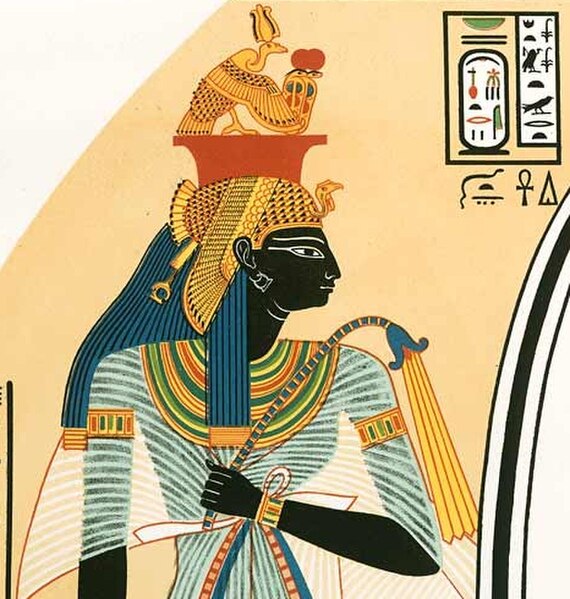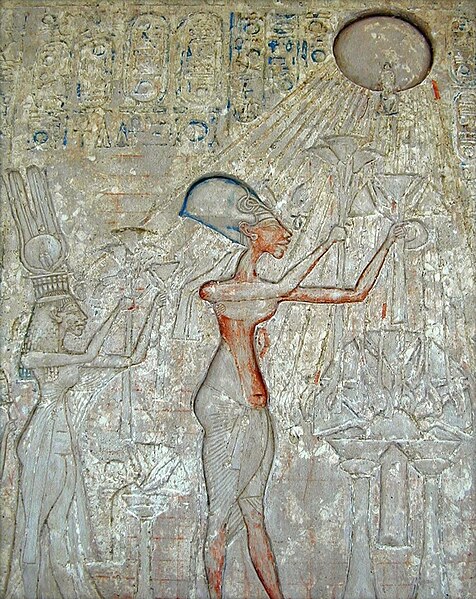Thutmose II was the fourth Pharaoh of the Eighteenth Dynasty of Egypt, and his reign is generally dated from 1493 to 1479 BC. Little is known about him and he is overshadowed by his father Thutmose I, half-sister and wife Hatshepsut, and son Thutmose III. He died around the age of 30 and his body was found in the Deir el-Bahri Cache above the Mortuary Temple of Hatshepsut.
Relief of Thutmose II in Karnak Temple complex.
Red granite fragment bearing the cartouche of Thutmose II. Probably from a throne of a seated statue. From Thutmose III Temple at Koptos, Egypt. 18th Dynasty
Aakheperenre, the praenomen of Thutmose II, temple of Hatshepsut, Luxor.
Thutmose II in front of an offering table. From the mortuary temple of Hatshepsut at Deir el-Bahari, Egypt. Neues Museum, Berlin
Eighteenth Dynasty of Egypt
The Eighteenth Dynasty of Egypt is classified as the first dynasty of the New Kingdom of Egypt, the era in which ancient Egypt achieved the peak of its power. The Eighteenth Dynasty spanned the period from 1550/1549 to 1292 BC. This dynasty is also known as the Thutmoside Dynasty) for the four pharaohs named Thutmose.
Ahmose-Nefertari. Ahmose-Nefertari was the daughter of Seqenenre Tao, a 17th dynasty king who rose up against the Hyksos. Her brother Ahmose, expelled the Hyksos, and she became queen of a united Egypt. She was deified after she died.
Head of an Early Eighteenth Dynasty King, depicting either Ahmose I, Amenhotep I or Thutmose I, c. 1539–1493 BC, 37.38E, Brooklyn Museum
Akhenaten and his family adoring the Aten. Second from the left is Meritaten, daughter of Akhenaten.
Block Statue of the Second Prophet of Amun Ay, c. 1336–1327 BC, 66.174.1, Brooklyn Museum








